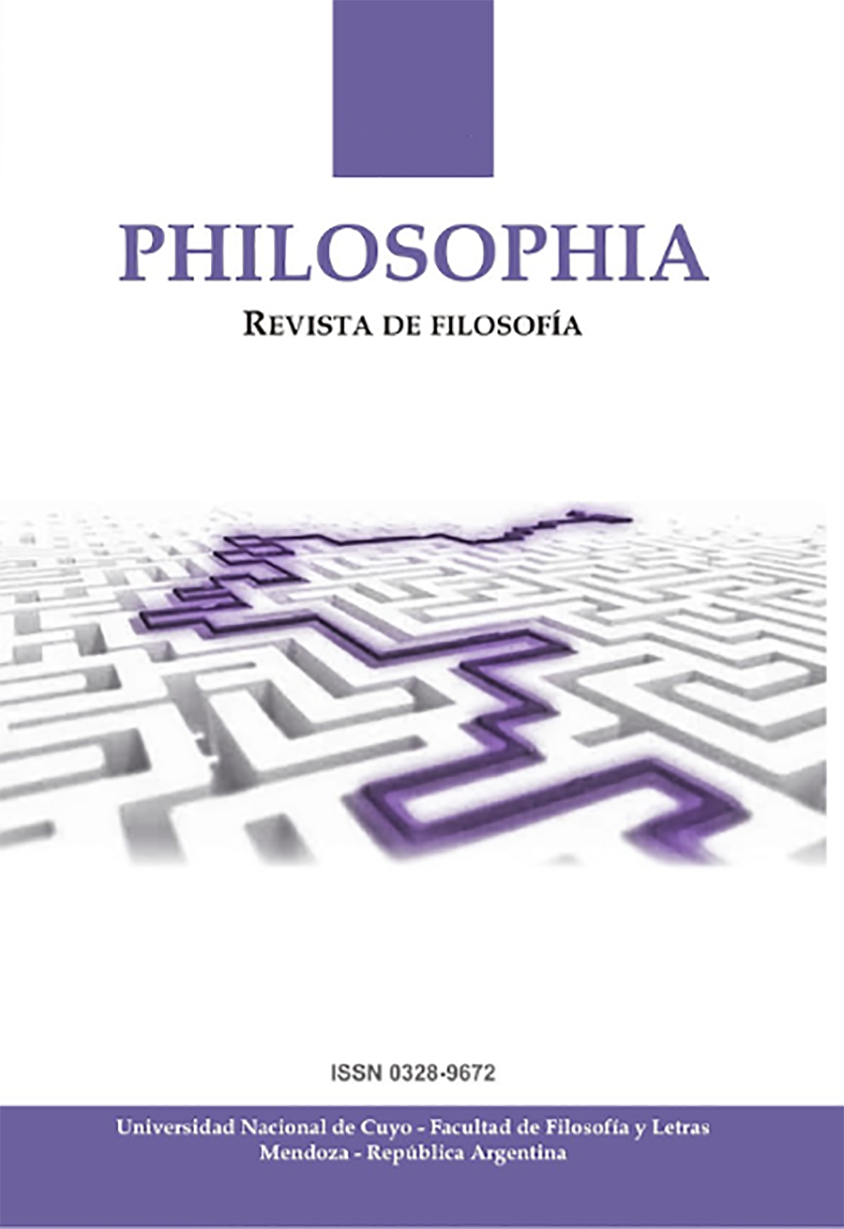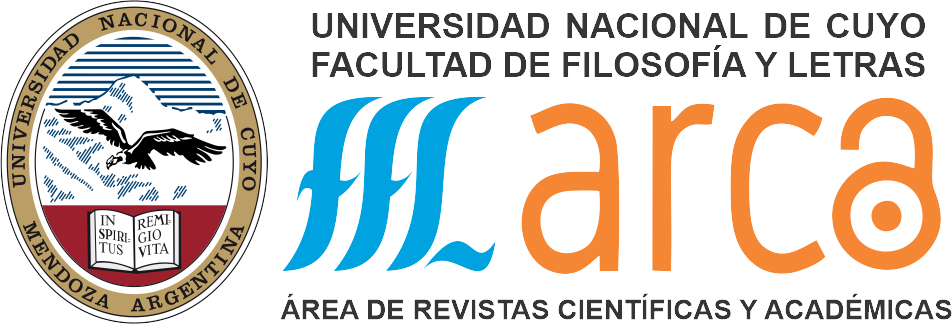Three Dimensional Analysis: from the First Person to Consiousness and the Self
DOI:
https://doi.org/10.48162/rev.50.013Keywords:
first-person perspective, consciousness, selfAbstract
This article analyzes three positions that share the first-person perspective as starting point in debates on philosophy of mind; however, each one has a different concept of consciousness and the self. The biological naturalism of John Searle, the neurophenomenology inspired by Francisco Varela and Dan Zahavi’s phenomenology of mind are studied in order to show the reasons why the same area of analysis gives rise to different stances.
References
Bennett, Maxwell, Daniel Dennett, Peter Hacker y John Searle. La naturaleza de la conciencia. Cerebro, mente y lenguaje. Traducido por Roc Filella. Barcelona: Paidós, 2008.
Chalmers, David. “Facing up to the problem of consciousness”. Journal of Consciousness Studies 2, 3 (1995): 200-219.
Dennett, Daniel. La conciencia explicada. Traducido por Sergio Balari Ravera. Barcelona: Paidós, 1995.
Depraz, Natalie, Francisco J. Varela y Pierre Vermersch, eds. On becoming aware. A pragmatics of experiencing. Amsterdam / Philadelphia: Josh Benjamins Publishing Company, 2003.
Gallagher, Shaun y Dan Zahavi. The phenomenological mind. 2 a ed. London: Routledge, 2012.
Gallese, Vittorio. “Corpo vivo, simulazione incarnata e intersoggettività. Una prospettiva neuro-fenomenologica” en Neurofenomenologia. La scienze della mente e la sfida dell'esperienza cosciente, editado por Massimiliano Cappuccio, 293-326. Milano: Bruno Mondadori, 2009.
García, Pablo Emanuel. “El yo como fundamento de la identidad desde la fenomenología de la mente de Dan Zahavi”, Philosophia, 78, 2 (2018): 23-43
García, Pablo Emanuel. Conciencia y yo en la fenomenología de la mente de Dan Zahavi. Pamplona: Eunsa, 2022. (En editorial).
Henry, Michel. L'essence de la manifestation. 2 a ed. Paris: Presses universitaires de France, 2003.
Jackson, Frank. “Epiphenomenal qualia”. The Philosophical Quarterly 32, 127 (1982): 127-136.
Leocata, Francisco. La vertiente bifurcada. La primera Modernidad y la Ilustración. Buenos Aires: Educa, 2013.
Lutz, Antoine y Evan Thompson. “Neurophenomenology. Integrating subjective experience and brain dynamics in the neuroscience of consciousness”. Journal of Consciousness Studies 10, 9-10 (2003): 31-52.
Nagel, Thomas. "What Is It Like to Be a Bat?". The Philosophical Review 83, 4 (1974): 435-50.
Petitot, Jean. “La réorientation naturaliste de la phénoménologie”. Archives de Philosophie 58, 4 (1995): 631-658.
Roy, Jean-Michel, Jean Petitot, Bernard Pachoud y Francisco Varela. “Beyond the gap, an introduction to naturalizing phenomenology”, en Naturalizing Phenomenology. Stanford: CA: Stanford University Press, 1999.
Rudrauf, David, Antoine Lutz, Diego Cosmelli, Jean-Philippe Lachaux y Michel Le Van Quyen. “From autopoiesis to neurophenomenology: Francisco Varela's exploration of the biophysics of being”. Biological Research 36, 1 (2003): 21-59.
Searle, John R. Intencionalidad. Un ensayo en la filosofia de la mente. Traducido por Enrique Ujaldón Benítez. Madrid: Tecnos, 1992.
Searle, John R. La construcción de la realidad social. Traducido por Antoni Domènech. Barcelona: Paidós, 1995.
Searle, John R. El redescubrimiento de la mente. Barcelona: Crítica, 1996.
Searle, John R. El misterio de la conciencia. Traducido por Antoni Domènech Figueras. Barcelona: Paidós, 2000.
Searle, John R. Libertad y neurobiología. Traducido por Miguel Candel. Barcelona: Paidós, 2005.
Searle, John R. La mente: una breve introducción. Traducido por Horacio Pons. Bogotá: Norma, 2006.
Searle, John R. “La conciencia”. (2007). URL=www.dialogos.unam.mx/pdf/la%20conciencia.pdf [Consultado el 21/02/13].
Thompson, Evan. Mind in Life: Biology, phenomenology, and the sciences of mind. Cambridge, London: Harvard University Press, 2007.
Thompson, Evan, Antoine Lutz y Diego Cosmelli. “Neurophenomenology: An Introduction for Neurophilosophers”, en Cognition and the Brain. The Philosophy and Neuroscience Movement, editado por Andrew Brook y Kathleen Akins, 40-97. New York: Cambridge University Press, 2005.
Varela, Francisco. “Conciencia del tiempo presente”, en El fenómeno de la vida, 317-365. Santiago de Chile: Dolmen Ediciones S. A., 2000
Varela, Francisco. “Metodologías en primera persona. Qué, por qué, cómo”, en El fenómeno de la vida, 295-316. Santiago de Chile: Dolmen Ediciones S. A., 2000.
Varela, Francisco. “Neurofenomenología. Un remedio metodológico para el difícil problema”, en El fenómeno de la vida, 257-294. Santiago de Chile: Dolmen Ediciones S. A., 2000.
Varela, Francisco, Evan Thompson y Eleanor Rosch. De cuerpo presente. Las ciencias cognitivas y la experiencia humana. Traducido por Carlos Gardini. Barcelona: Editorial Gedisa, 1992.
Zahavi, Dan. Husserl's Phenomenology. Stanford: Stanford University Press, 2003.
Zahavi, Dan.“Intentionality and Experience”. Synthesis Philosophica 20, 2 (2005): 299-318.
Zahavi, Dan. “Phenomenology”, en Routledge Companion to Twentieth-Century Philosophy, editado por Dermot Moran, 661-692. London: Routledge, 2008.
Zahavi, Dan. “Objects and levels: Reflections on the relation between time-consciousness and self-consciousness”. Husserl Studies, 27 (2011): 13-25.
Zahavi, Dan. Self and Other: Exploring Subjectivity, Empathy and Shame. Oxford: Oxford University Press, 2014.
Zahavi, Dan. Husserl's Legacy. Phenomenology, Metaphysics, and Transcendental Philosophy. Oxford: Oxford University Press, 2017.
Downloads
Published
How to Cite
Issue
Section
License
Copyright (c) 2022 Pablo Emanuel García

This work is licensed under a Creative Commons Attribution-NonCommercial-ShareAlike 3.0 Unported License.
Se permite la reproducción de los artículos siempre y cuando se cite la fuente. This work is protected under license Attribution-NonCommercial-ShareAlike 3.0 Unported (CC BY-NC-SA 3.0) You are free to: Share "” copy and redistribute the material in any medium or format; Adapt "” remix, transform, and build upon the material
The licensor cannot revoke these freedoms as long as you follow the license terms.
Under the following terms:
Attribution "” You must give appropriate credit, provide a link to the license, and indicate if changes were made. You may do so in any reasonable manner, but not in any way that suggests the licensor endorses you or your use.
NonCommercial "” You may not use the material for commercial purposes.
ShareAlike "” If you remix, transform, or build upon the material, you must distribute your contributions under the same license as the original.
No additional restrictions "” You may not apply legal terms or technological measures that legally restrict others from doing anything the license permits.
For more information, please visit: https://creativecommons.org/licenses/by-nc-sa/3.0/deed.en






